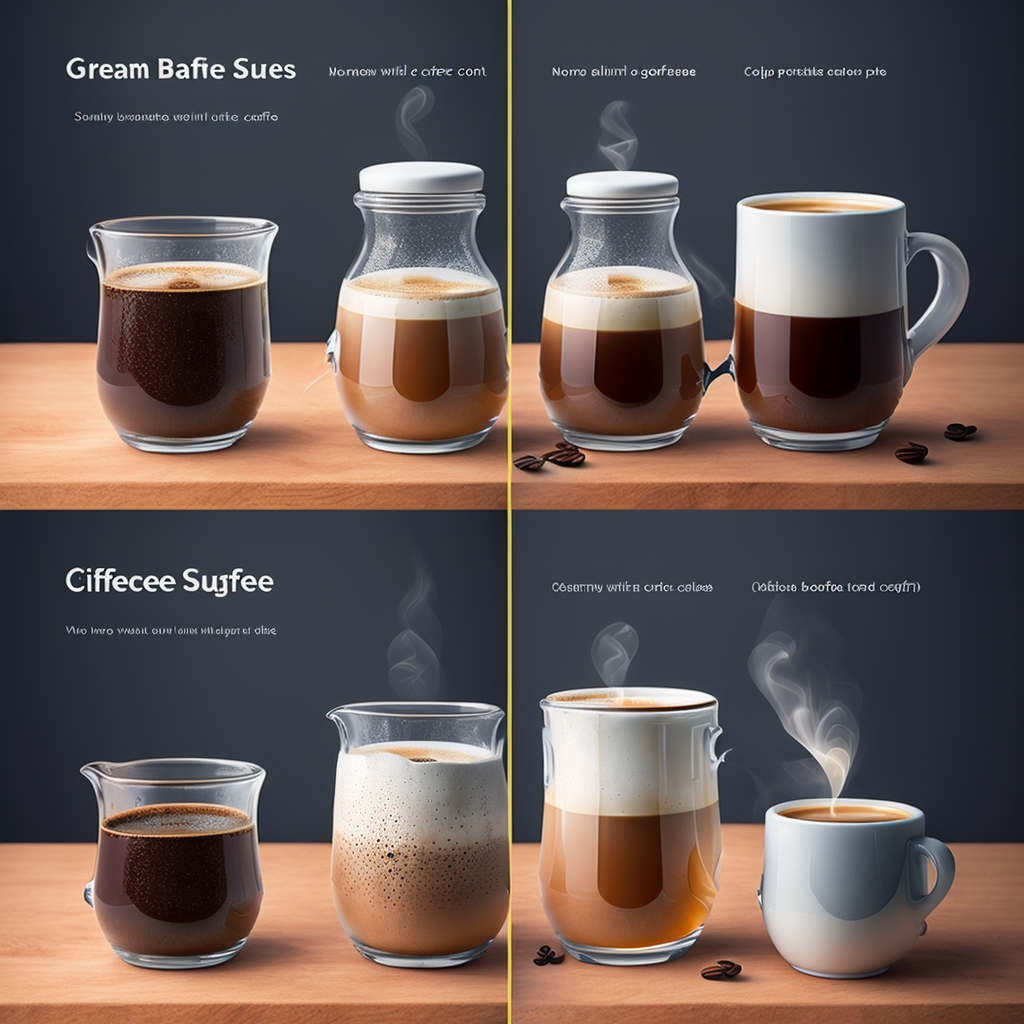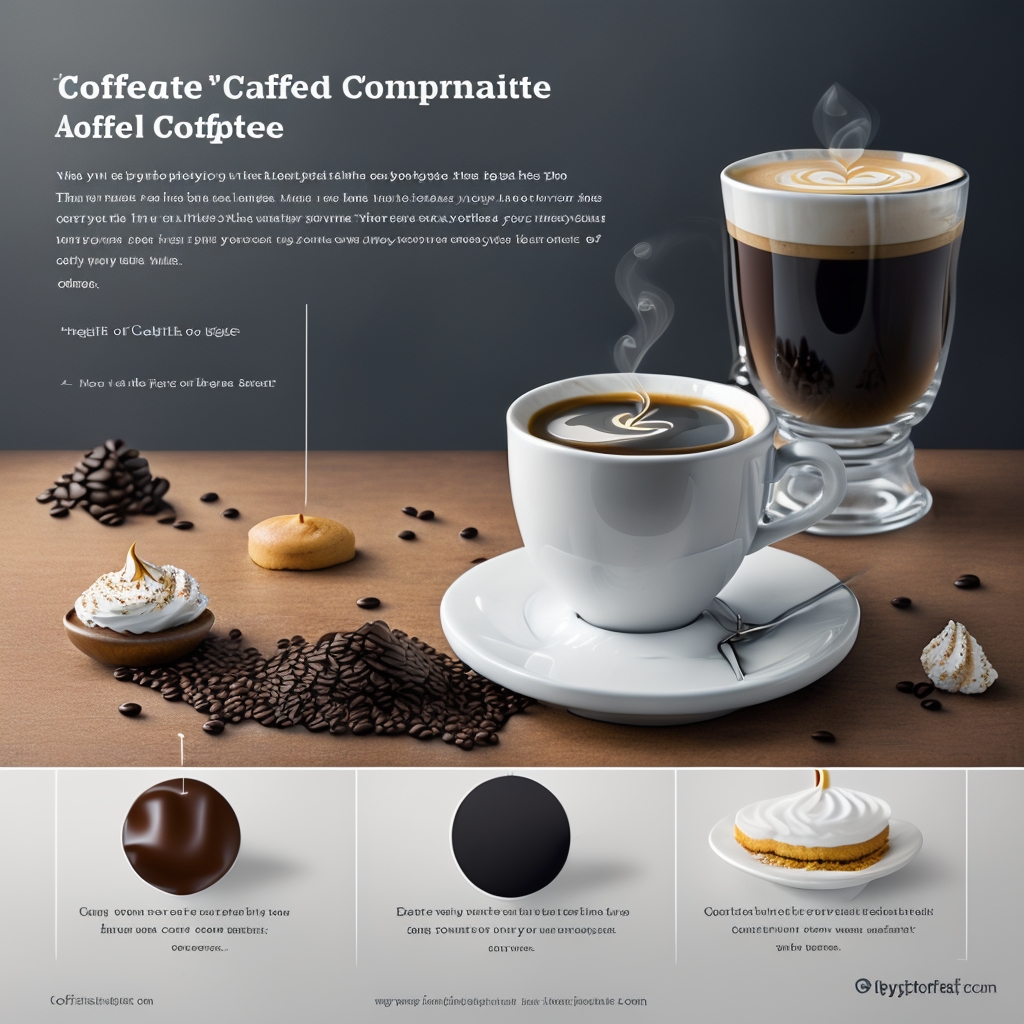Perfect Balance: Determining the Ideal Cream and Sugar Ratio in Your Coffee
Has your morning cup of joe become a guessing game of how much cream and sugar to add? We’ve all been there, tirelessly tinkering with the amounts, striving for that perfect balance that awakens the senses and invigorates the palate. But worry no more. This guide will help you demystify the proportions and enhance your at-home brew.
The Art of Balance
Discovering the ideal cream and sugar ratio in your coffee is, indeed, an art. There’s no one-size-fits-all answer because personal taste varies. Therefore, the trick is to find what makes your taste buds sing. Start by adding a teaspoon of sugar and a tablespoon of cream to a cup of coffee. Gradually adjust this base recipe until you hit the sweet spot of flavor harmony.
Cream and Sugar Impact on Flavor
It’s crucial to understand how these additions impact your coffee’s flavor. Sugar neutralizes the bitterness, enhancing the natural sweetness of the beans. Cream, on the other hand, adds depth, mellows the acidity, and gives your coffee a luxuriously smooth texture.
| Cream Amount | Sugar Amount | Resulting Flavor |
|---|---|---|
| 1 tablespoon | 1 teaspoon | Light, sweet, and creamy |
| 2 tablespoons | 2 teaspoons | Rich, creamy, mildly sweet |
| No cream | 1-2 teaspoons | Sweet, slightly bitter, robust |
In essence, getting the right cream and sugar ratio buoys your coffee experience, taking it from bland to grand. So experiment, fine-tune, and enjoy the journey to a divine cup of coffee.

Coffee Cream Choices: Exploring the Different Types for Your Morning Cup
The cream you choose can drastically change the taste profile of your cup of coffee. Not all creams are created equal, and it might surprise you how various types can alter flavor, nutrition, and even textural aspects of your brew.
Dairy Cream
Traditional dairy cream, whether it’s half-and-half, whole cream, or milk, adds a certain richness that complements the coffee’s robustness perfectly. However, note that higher-fat options like whole cream yield a smoother and more indulgent flavor than lower-fat options like milk.
Plant-Based Creamers
In recent years, plant-based creamers have gained popularity as a dairy alternative. Almond, oat, or coconut-based creamers each lend a distinctive flavor to your coffee. For instance, oat milk is known for its creamy texture and mild sweetness, making it a popular choice for latte lovers.
Flavored Creamers
For those seeking a little extra kick in their cup, flavored creamers are an excellent option. These range from vanilla, caramel, to even hazelnut. Remember, these tend to be sweeter and may dial down the natural richness of your coffee.
| Type of Cream | Flavor Impact | Nutrition Notes |
|---|---|---|
| Dairy Cream | Rich, mellow | Higher in calories and fat |
| Plant-Based Creamers | Varies per type, generally lighter and nuttier | Often lower in calories and contains healthy fats |
| Flavored Creamers | Depends on flavor, usually sweet | Potentially high in added sugars |
So, when selecting a cream for your coffee, consider the taste, health implications, and personal preference. The perfect cream is out there, waiting to transform your coffee into a tantalizing morning treat. The journey towards the perfect cup continues.

Sugar and Cream: How They Interplay with Your Coffee’s Caffeine Content
Coffee is globally renowned for its caffeine content. It’s the morning jolt for many people, but do you know how your cream and sugar potentially meddle with this energy booster? Let’s dive in.
Cream and Caffeine’s Romance
Believe it not, the cream does have an effect on how the body absorbs caffeine. The fat content in cream can slow the process of caffeine absorption, somewhat gentling the caffeine rush. This might sound like a negative point for your wake-up routine, but in reality, it could lead to a steadier and longer-lasting alertness.
Sugar’s Role in the Caffeine Scene
Sugar doesn’t directly impact caffeine absorption like cream, but it does have an indirect influence. By sweetening the brew, sugar can mitigate the bitterness of coffee, possibly urging you to consume more. Consequently, you could inadvertently up your caffeine intake along the way.
The Dynamic Duo’s Total Influence
When sugar and cream team up in your cup, they create a flavor profile that disguises the strong taste of caffeine, encouraging more coffee consumption. It’s a balancing act: smoother flavor, potentially higher caffeine intake.
Some Tips
- Measure your cream and sugar to control your caffeine intake.
- Consider trying black coffee to test your tolerance to pure caffeine.
- For coffee aficionados keen on maximizing caffeine intake, an alternative like black coffee with a little sugar might be the way to go.
It’s always intriguing to see how our daily rituals have layered complexities that we might not initially notice. As we sip our next coffee, let’s remember the integral role our beloved cream and sugar have, influencing not just the taste but our caffeine intake too. The perfect cup of coffee is a process, let’s move on to the next element.

Beans to Calories: The Nutritional Impact of Adding Cream and Sugar to Your Coffee
As we delve further into the complexities of our morning cup, it’s vital to consider the nutritional aspect of including cream and sugar in your coffee – after all, we don’t merely consume caffeine, right? So let’s pull back the nutritional curtain.
Calories in Cream
Cream, due to its fat content, adds a significant number of calories to your cup. The specific amount certainly depends on the type of cream used: half-and-half, light, heavy, or whipped. For instance, a tablespoon of heavy cream adds about 52 calories, while the same amount of half-and-half comes in at around 20 calories.
Sweetening with Calories
The sugar’s calorie-count is likewise crucial. A teaspoon of white granulated sugar typically contains about 16 calories. The count may not seem high, but remember that it adds up if you’re a regular or multi-cup coffee drinker.
Total Tally
Combine the cream and sugar, and you can see how the figures stack up. Even a small amount of each can easily bring your coffee up to 100 calories or more – far from calorie-free!
Nutrition Hacks
- Swap out heavy cream for lighter creams or even milk to trim the fat and calorie count.
- Use natural sweeteners like stevia or erythritol which have zero or minimal calories.
- Gradually reduce the quantities of cream and sugar added to your coffee; you might end up favorably adjusting to the less-sweet and less-creamy taste.
Now that we’ve taken the calorie-centric tour of our coffee habits, you’re probably thinking about healthier ways to enjoy your coffee. It’s completely possible. Let’s explore in the next section.

The Healthy Coffee Debate: Is Your Cream and Sugar Habit Ruining It?
With calorie counts in mind, you might be contemplating the impact your cream and sugar habit has on the healthiness of your coffee. Let’s dissect the matter.
Habitual Health Hazards
Regularly adding generous amounts of cream and sugar to your coffee not only ups your calorie count, but also potentially increases your risk of certain health conditions like obesity, heart disease, and diabetes.
The Coffee Health Paradox
Interestingly, coffee itself is often touted as a health booster being packed with antioxidants and aiding cognitive function. But load it with cream and sugar, and your healthy brew might become a latte laden with unhealthy extras.
Alternative Options
- Switch to black coffee: It’s a long leap, we know, but this is the purest and healthiest way to enjoy coffee. The calorie count is virtually nil, and you get to fully appreciate the nuanced flavors of the beans.
- Non-dairy alternatives: Unsweetened almond, hemp, or oat milk are great alternatives as they are low in calories and fat content.
- Consider cinnamon or unsweetened cocoa powder for a hint of flavor without additional sugar.
By keeping an eye on your cream and sugar use and making some smarter choices, you can ensure that your daily caffeine fix doesn’t compromise your health goals. But what does the latest research say about adding cream and sugar to coffee? We’ll tackle that next.

Recent Scoop: Latest Research on the Ideal Amount of Cream and Sugar in Coffee
Now that we’ve established how your favorite creamy, sugary coffee affects your health, let’s dive into the latest research. Scientific studies might not provide an exact measurement, but they can give valuable insights.
The Cream and Sugar Dilemma
Research has shown there’s no one-size-fits-all answer. Your ideal ratio of coffee to cream and sugar largely depends on personal taste and how your body responds to these added ingredients.
A Question of Palate and Health
Some people find black coffee too bitter, making cream and sugar the go-to additives for a smoother drinking experience. But, the cumulative impact of several cups per day, over time, can lead to health issues – something you might want to take into account.
Recent Research:
- Some studies reiterate that black coffee has the most health benefits, while additives like sugar and cream detract from these benefits.
- Others suggest moderate consumption of cream and sugar doesn’t pose significant health threats, especially if we’re mindful of maintaining an overall balanced diet.
In the end, your perfect cup of coffee boils down to personal preference and health consciousness. So, brew that cup, add your cream and sugar (or don’t) and relish each sip knowing more about the impact of your choices. As a coffee lover, your understanding of coffee, sugar, cream, and their interplay couldn’t get any better. Enjoying coffee is an art, and now you’re more of an artist than ever!
